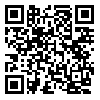BibTeX | RIS | EndNote | Medlars | ProCite | Reference Manager | RefWorks
Send citation to:
URL: http://tumj.tums.ac.ir/article-1-6912-en.html
2- Research Center of Pediatric Infectious Diseases, Rasoul Akram Hospital, Iran University of Medical Sciences, Tehran, Iran.
3- Research Center of Pediatric Infectious Diseases, Rasoul Akram Hospital, Iran University of Medical Sciences, Tehran, Iran. ,
Background: Convulsion is one of the common cause of hospital admission in children. Idiopathic seizure is when no anatomic, electrolytic, metabolic or hemorrhagic causes are found. Recently, lead poisoning, which is considered when serum lead levels are higher than the normal levels (previously 10 &mug/dl changed to 5 &mug/dl). Even lower levels of lead inflict harmful consequences in central nervous system (CNS) development in pediatric group. Due to air pollution and high lead level in air of Tehran, investigation the probable role of lead in producing or predisposing convulsion in children is very important. To determine the cerebrospinal fluid (CSF) lead level in children with idiopathic convulsion in compare with nonconvulsive ones (control). Methods: A case-control study upon 60 children (30 convulsive and 30 nonconvulsive control) admitted in Rasoul Akram and Ali Asghar University Hospitals, Tehran, from 2012 to 2013 had done. One ml of CSF obtained and lead level determined by atomic absorption test. Results: The mean age between cases and controls was not different (mean= 30.18+27.36 vs 25.46±20.56 months, P= 0.1). The CSF lead level (&mug/dl) had not meaningful difference between 2 groups (3.43+3.07 vs 2.78+2.77, P= 0.3), and no related to type of convulsion in cases (P= 0.7), the area under the curve (AUC) was 0.588 1-0.433, P= 0.2). The CSF lead cutoff was 1.65 &mug/dl sensitivity of 70%, specificity of 46%, PPV and NPV was 56% and 60% respectively. Conclusion: The toxic blood level for lead is 3.5 &mug/dl. The CSF lead level even in little amount (1.65 &mug/dl) is an acceptable sensitivity but lower specificity for differentiation the convulsive from nonconvulsive children. Although the role of genetic and other causes should be considered in idiopathic convulsion, probably, the high level of lead in CSF could predispose those children to convulsion. It can effect CNS development in children even in small amounts. Indeed, long-term effects of lead which continue to adulthood should be considered as well. Hence, it is paramount to rectify the ambient air lead pollution in Tehran.
| Rights and permissions | |
 |
This work is licensed under a Creative Commons Attribution-NonCommercial 4.0 International License. |





